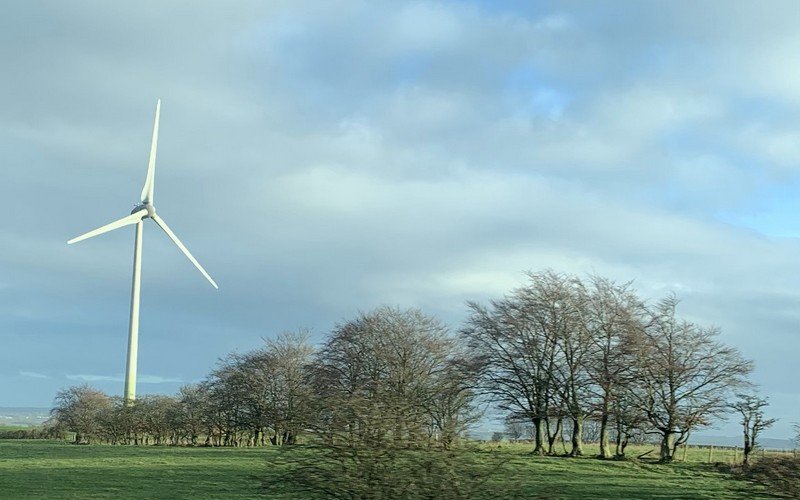How to make your website more environmentally friendly
Every online activity, from emailing to website hosting, has an environmental footprint. I recently had the opportunity to work on Sustainable UCL's website. Streamlining their content improved the user experience, but also reduced their carbon footprint.
The project made me much more conscious of the impact my work has on the environment. Below are changes you can easily make to reduce the carbon footprint of your website.
Understanding the environmental impact of your website
Websites can have both positive and negative impacts on the environment, depending on how they are designed, hosted, and maintained:
Positive Impacts
Reduce physical waste: Digitalisation of services reduces the need for physical materials and transportation, thereby lowering overall carbon emissions.
Reach wider audiences: websites are a more efficient way to reach wider audiences without the need for more versions of physical content, leading to waste reduction.
Negative Impacts
Energy consumption for hosting and access: data centres are the backbone of web hosting. Data centres are energy-intensive, requiring vast amounts of electricity for servers and cooling systems. The internet's carbon footprint is substantial and growing, with estimates suggesting that it accounts for about 2% of global carbon emissions, similar to the airline industry.*
Data transfer and storage: each time a user visits your site, data is transferred from the server to the user's device. This transfer consumes energy, and the more data that needs to be sent, especially for content-heavy sites, the higher the storage need and therefore energy usage and carbon footprint.
E-waste generation: frequent updates and redesigns can contribute to e-waste if the hardware needs to be replaced to support newer technologies or heavier site loads.
Tips to Make your website more eco-friendly
Below is a list of improvements you can make to make your website more sustainable:
Content improvements
Optimise image sizes: compress and optimise images to reduce their file sizes. This decreases the amount of data that needs to be transferred and stored, thus reducing energy consumption.
Minimise use of videos: limit the use of auto-play videos and embeds. If videos are necessary, consider using links to external platforms instead of hosting them directly on your site.
Dedicate time to strategic planning: invest in strategic planning to develop a flexible and scalable website that accommodates your business's growth and changes. This will avoid the need for frequent complete overhauls and reduce the risk of contributing to electronic waste.
Monitor website performance: regularly monitor your website's performance and look for opportunities to improve its efficiency and reduce its carbon footprint.
Educate visitors: include information on your website about the steps you are taking to reduce its carbon footprint. Include why it’s important and encourage visitors to be more mindful of their digital carbon footprint.
Technical improvements
Streamline web design: adopt a minimalist and efficient web design that uses fewer pages and elements. This will reduce the amount of data that needs to be loaded and transferred.
Use efficient coding practices: write clean, efficient code to reduce the processing power required to load and run your website.
Enable caching: implement caching so that returning visitors can load the website faster, reducing the amount of data that needs to be transferred repeatedly.
Reduce redirects and HTTP requests: minimise the number of redirects and HTTP requests to decrease the amount of data transferred and processed. If you no longer need the page, delete it!
Choose a green hosting provider: select a web hosting service that uses renewable energy sources and has a commitment to reducing its carbon footprint. (See the list below of UK Green Energy Providers.)
Leverage content delivery networks (CDNs): Use CDNs to distribute your content more efficiently, reducing the distance data needs to travel, which can save energy.
Use lazy loading for images: implement lazy loading so that images and other heavy content are only loaded when they're about to be viewed on the screen.
Optimise fonts and CSS: use web-optimised fonts and streamline your CSS files to reduce file sizes and the number of server requests.
Limit the use of plugins and scripts: reduce the number of plugins and third-party scripts as they can add extra data and processing requirements.
Choose eco-friendly themes: select themes designed with performance and sustainability in mind.
What’s not surprising about this list, is that these are recommendations I encourage my clients to make for all website projects anyway.
Maintaining an ethically sustainable digital presence lies in keeping your website clean, tidy, and well-maintained. Regular reviews and updates ensure that your site remains efficient, user-friendly AND environmentally conscious!
By adopting sustainable web practices and green hosting, you not only enhance the functionality and appeal of your website but also contribute positively to the environment. #winning!
That Web Person specialises in strategic planning for your website
Get in touch
Green Hosting Providers
Eco Hosting: Eco Hosting is a carbon-neutral web hosting company that uses renewable energy. They offer reseller, cloud, premium, and WordPress hosting services. All their servers are located in the UK.
https://www.ecohosting.co.uk/
Green Hosting: Green Hosting operates 100% on renewable wind energy and is particularly suited for nonprofits and charitable organisations. They offer a variety of hosting plans and partner with several organisations focused on sustainability and ethical practices.
https://www.green-hosting.co.uk/
Useful links
Tech for Good: An initiative that encourages the use of technology for social and environmental benefits. They provide resources and case studies on sustainable digital practices.
https://www.techforgood.net/
Business Green: A UK-based website offering news, analysis, and insight into green business practices, including sustainable web and IT strategies.
https://www.businessgreen.com/
The Carbon Trust: Provides guidance and resources on reducing carbon emissions, including digital carbon footprints and sustainable IT practices.
https://www.carbontrust.com/


